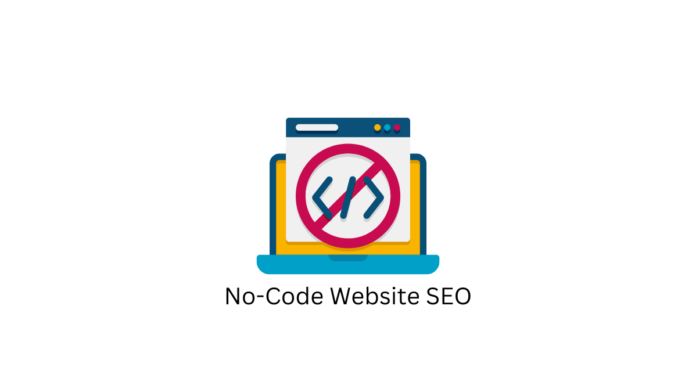Website creation technologies have come a long way in recent years. In the past, businesses had to rely on web developers and designers to create even the simplest websites. But now, many no-code website builders allow businesses to create their websites without coding knowledge.
Nevertheless, that might seem barely professional. All those Wixes and other site creators might be a child’s play in the business field in someone’s perception. Still, can you ensure that your no-code website is great regarding SEO? Let us explain how to make a no-code business site that suffices to achieve your business goals.
The Ultimate SEO Checklist for Your No-Code Website Project
A technical SEO checklist is necessary regardless of how you create a business site project. That means meeting users’ and the search engine’s digital demands to present a fully-designed, convenient, relevant, and practical website with excellent content. The apparatus for checking your website’s health and state is the SEO crawler tool. Suppose you have already crawled the site and obtained a report. Be attentive to the following aspects:
1. Page Experience
Make sure that the website is easy to use. Users should have a pleasurable experience while scrolling through your pages, and all elements should work correctly. The constituents here are:
Loading speeds
The first step is checking each page’s loading speed on desktop and mobile devices. If it takes more than three seconds to load, you need to improve the situation by either compressing images or using a content delivery network (CDN).
Mobile-friendliness
Make sure the website is convenient for mobile devices of various screen sizes. The text should be legible, and all buttons and links should be easily clickable. If you are unsure whether your site is mobile-friendly, use Google’s Mobile-Friendly Test tool.
Security
Users should feel safe while using your website, so make sure it is well-protected from hackers. The wisest and most practical way to do this is to install an SSL certificate. That will encrypt all the data passing through your website, making it unreadable to anyone who tries to intercept it.
2. On-Page SEO
The next thing to check is on-page SEO. That includes all the elements on your website that you can control and optimize to improve your ranking in the search results. These are:
Title tags and meta descriptions
Each page must have a non-repeatable title tag and meta description. They should be relevant to the content on the page and include the target keyword.
Headings and subheadings
Use headings and subheadings to break up your content and make it easier to read. Heading tags (H1, H2, H3, etc.) should be used in a hierarchy, with the most important heading (H1) being used once on each page.
Images
First and foremost, the visuals must be contextually adequate and be of high quality simultaneously. Business doers should still compress them to reduce their file size without sacrificing quality, and they should all have relevant alt text.
Internal links
Internal links are components that point from one page on your website to another page on your website. They let spiders crawl your website and can also help improve your ranking in the search results.
3. Technical SEO
Finally, you need to check your website’s technical aspects to ensure it is configured correctly and that there are no errors that could prevent it from being indexed by search engines. These include:
Robots.txt file
The robots.txt component tells search engine crawlers which pages on your website they should and shouldn’t crawl.
XML sitemap
An XML sitemap is… well, a map that contains a list of all the pages on your website. Even though it might look chaotic to you, it helps search engines crawl your website and can also help improve your ranking in the search results. As a rule, SEO specialists highlight that the XML component is relevant for vast website projects with too many pages, which complexifies navigation. For instance, something like Wikipedia cannot have positive crawling results without a full sitemap. Still, we recommend creating an XML map even if your site is not enormous.
URL structure
Your website’s URL structure should be clean and easy to understand. URLs should use hyphens (-) to separate words and be as short as possible.
Isolated pages
You should also check for any isolated pages on your website. Isolated pages are pages that are not linked to any other page on your website. That may occur if you delete a page from your website and remove all the links or create a new page but forget to add it to your sitemap.
404 errors
A 404 error is an error that occurs when a user tries to access a page that doesn’t exist. That inconvenience usually happens when you delete a page from your website and don’t redirect the URL.
4. Off-Page SEO
Off-page SEO refers to everything you can do outside of your website to improve your ranking in the search results. These are:
Link building
That must be a natural process when other websites see your content as a relevant addition to their materials. Hence, they will get a link from you and place it somewhere in their text to let users find more relevant content elucidating the topic. The more high-quality “references” (links) you have pointing to your content and pages, the higher your ranking will be in the search results.
Social media
Social media can also have an impact on your website’s SEO. The more people that share your content on social media, the more likely people will see and link to it.
Extra Tip: Always Eliminate Duplicate Content
Duplicate content is one of the biggest SEO problems. It happens when you have two or more pieces of content on your website that are similar (or very similar). That is a common challenge if you have multiple pages with the same title or your website has been hacked, and someone has added duplicate content. While the first scenario is easily-solvable, the second “story” might bring more challenges. Of course, some rivals might even be more elaborate with their mischief. For instance, they might create different websites for free and post your content as if you have plagiarized it. The sole solution here is rewriting everything you have, especially when there is no evidence to pinpoint the opponent.
Extra Tip 2: Conduct SEO Checks Often
The SEO landscape is changing, so it’s important to keep up-to-date with the latest changes. Google alters its algorithm regularly, and your website needs to be optimized for these changes. Plus, you cannot predict when one of the images goes errored for no reason. So, systemic checks will not hurt.
Final Words
Yes, you can create amazing SEO-optimized projects for business with a website constructor. Yet, having a website is not enough to succeed online. It needs to be visible, and this is what SEO is for. To ensure that your no-code website ranks high in the search results, you need to do both on-page and off-page SEO. And don’t forget about the technical aspects of your website too!











